Explore the Best AI Image Gallery

Quantum Creativity: Unleashing the Potential of Quantum Computing in the Arts
The realm of art and technology has always been a fertile ground for innovation. From the Renaissances embrace of perspective to the digital revolutions explosion of multimedia, each era has seen creative minds pushing boundaries with new tools. Now, on the cusp of a quantum leap, we stand at the threshold of an even more transformative era. Quantum computing, with its ability to process information in fundamentally different ways, is poised to reshape the creative landscape, offering unprecedented possibilities for artists, designers, and innovators.
Breaking Barriers: How Quantum Computing Impacts Creativity
While still in its nascent stages, quantum computing has already begun to demonstrate its potential in various creative domains:
- Generative Art: Quantum algorithms can generate intricate and complex patterns, textures, and even musical compositions, pushing the boundaries of artistic expression beyond human imagination. Imagine AI-powered tools that compose symphonies inspired by quantum phenomena or design surreal landscapes based on quantum entanglement.
- Interactive Experiences: Quantum computing can enable highly immersive and interactive art installations. Imagine sculptures that respond to viewers emotions through subtle changes in color, light, or sound, powered by quantum sensors and algorithms.
- Design Optimization: From architecture to fashion, quantum algorithms can optimize designs for efficiency, sustainability, and aesthetic appeal. Imagine architects using quantum simulations to design buildings that adapt to changing weather conditions or clothing designers creating garments that seamlessly integrate with wearable technology.
Navigating the Ethical Landscape
As with any powerful technology, quantum computing in the arts raises important ethical considerations:
- Authorship and Ownership: When AI systems generate art, who owns the copyright? Should artists be compensated for their input, even if the final product is largely created by an algorithm?
- Bias and Representation: Quantum algorithms are trained on data, which can reflect existing societal biases. Its crucial to ensure that quantum-generated art is diverse and inclusive, representing a wide range of perspectives and experiences.
- Accessibility and Equity: The benefits of quantum computing should be accessible to all, not just a select few. We need to consider how to bridge the digital divide and ensure equitable access to these transformative technologies.
Future Horizons: The Quantum Canvas
The future of art in the age of quantum computing is brimming with possibilities. Imagine:
- Quantum-Inspired Music: Composers utilizing quantum algorithms to generate truly unique melodies, harmonies, and rhythms that defy conventional musical structures.
- Personalized Art Experiences: AI-powered tools creating personalized artworks based on individual preferences, memories, or even biometric data.
- Quantum Simulations for Artistic Expression: Artists using quantum simulations to explore complex phenomena, such as the behavior of light or the dynamics of biological systems, and translating these insights into captivating artistic works.
As quantum computing continues to evolve, it promises to unlock new dimensions of creativity, blurring the lines between technology and art. By embracing these possibilities while navigating the ethical challenges responsibly, we can usher in a new era where quantum creativity empowers artists, inspires audiences, and pushes the boundaries of human imagination.

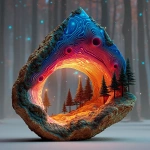
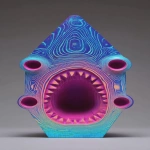

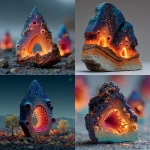
](https://images.ai-img.art/thumbnails/150/a31f622763ce0ecb2e76a907e566b81cfcc171e8d9b8b393f27681be24b6ca91.webp)
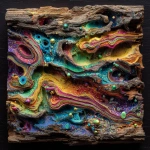
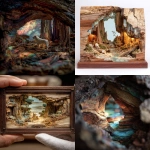


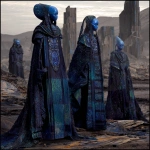

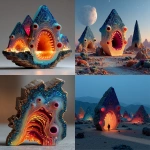
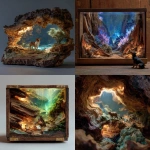
](https://images.ai-img.art/thumbnails/150/ac7218edd6198d49ed8d9853a5890595fc4d2a7a11c2e8a7ee8bcfbc7bfe265e.webp)


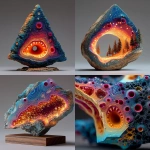
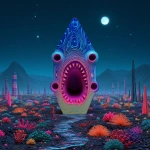
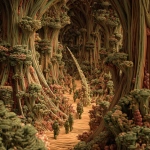



](https://images.ai-img.art/thumbnails/150/98325fa7102e81df81f1dba6df8df52929b4fa41b058192faf3c77cf94513ff7.webp)
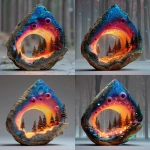

](https://images.ai-img.art/thumbnails/150/ebc95932b25c17607076ed8d2a4bafc85c3371cf3f2d45c35741505fe3c97de1.webp)

](https://images.ai-img.art/thumbnails/150/7d9de60c58579b921ad140a9e1d752642452d5086b74a27d866e8af04608ed7d.webp)
](https://images.ai-img.art/thumbnails/150/09314c003088f7174f747fa65105eca599e0842cf69e637ce4c98ebefd3f50ab.webp)
](https://images.ai-img.art/thumbnails/150/3b65287fef447a6ad61bcb18b5b9d03b6f6f74603ae0e058f81f4b91a3e02f36.webp)
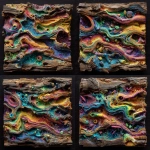
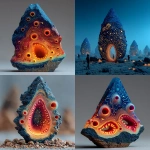
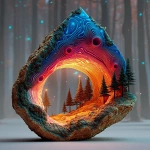
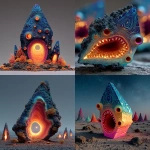
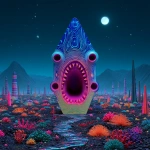
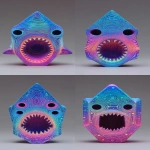
](https://images.ai-img.art/thumbnails/150/914cb18c03c97bdba2f290c0ec1573d5792bf399dbad7f484614764eb31f4c2f.webp)

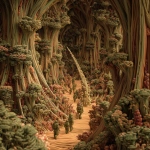

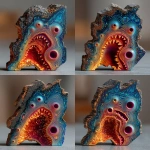



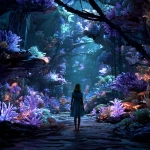


](https://images.ai-img.art/thumbnails/150/769518185300fcbda91b7bbf92b9007bc856379accd52eaf7983f9aec379e88e.webp)
